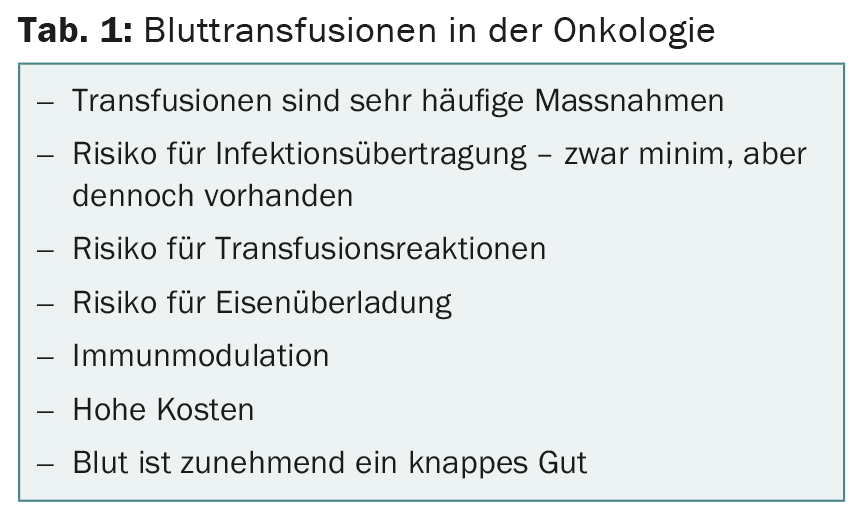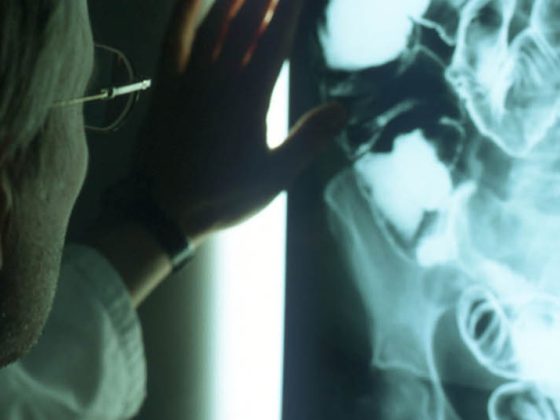At the annual congress of the German, Austrian and Swiss Societies of Hematology and Medical Oncology (DGHO) in Basel, various supportive measures were scrutinized during a symposium. More exercise during chemotherapy not only promotes quality of life, but can even favorably influence the course of the disease. In contrast, blood transfusions are increasingly being managed according to the motto “less is more”.
Exercise and sports benefit health in many ways. But does this also apply to cancer patients? In the past, cancer patients were advised to rest and recover rather than exercise. However, current studies show that sport during cancer therapy not only strengthens psychological and physical well-being, but can also have a positive effect on the course of therapy. Dr. med. Florian Strasser, Kantonsspital St. Gallen, presented some studies and formulated the consequences for daily practice.
Physical training: a new “drug” in adjuvant therapy?
In the Canadian START study, around 250 breast cancer patients were randomized into three groups: Group 1 underwent aerobic exercise during chemotherapy, Group 2 strength training, and Group 3 was the control group with no additional exercise. At eight-year follow-up, 82.7% of patients in the exercise groups were disease-free, compared with 75.6% in group 3 [1]. Exercise training showed a stronger effect in overweight women, in women with stage II and III tumors, and in patients who had completed more than 85% of the planned chemotherapy, among others. This study is the first with randomized data showing a potentially positive effect of physical training on breast cancer disease progression.
A Dutch study showed that moderate to intensive exercise training during chemotherapy had a beneficial effect on several parameters: cardiorespiratory fitness, fatigue, symptom burden (nausea, pain), and return to work [2]. More patients in the group that completed training completed the entire scheduled chemotherapy than in the group without training. It is thought that this higher rate of “therapy quitters” led to the better outcome in the training group.
Promote normal activity, actively offer athletic training
However, it is rather difficult to recruit patients for exercise trials: 25-50% refuse to participate [3]. It is more likely to be patients with a good education and a job who want to follow a sports program during cancer therapy. Patients who choose not to participate tend to have poorer quality of life, less social support, and greater prejudice against physical exercise. Therefore, structures should be created to reduce such barriers and to communicate the benefits of physical activity to patients.
So what do these study results mean for patient counseling in practice? The speaker formulated three take-home messages:
- Proactively offer patients an exercise program: The key is to teach them that they don’t need to break any records, but that any exercise, even low-intensity exercise, is better than no exercise.
- Encourage “normal” activity, for example, in the home or during leisure time. Patients often need reassurance that they are allowed to be active at all, despite chemotherapy, and that exercise will not harm them but help with symptom control.
- Offer a choice of different activities, for example, home exercise programs or activities only after cancer therapy.
Transfusion triggers in oncology
In recent years, there have been ongoing discussions in oncology about transfusion triggers for platelets, but there are few data on when transfusions of red cell (RBC) concentrates are appropriate. The topic is very relevant for various reasons, emphasized PD Ulrich Schuler, MD, University Hospital Carl Gustav Carus, Dresden (D), among others because transfusions increase the rate of infection, presumably as a consequence of immune modulation (tab. 1) .

Several recent studies indicate that patients with multiple transfusions have a higher rate of infection than patients without transfusions. In studies in which patients were transfused with a deeper trigger, correspondingly fewer infections occurred. However, it is unclear whether these results can be applied to hematologic oncology patients who are at high risk for infectious disease anyway.
Traditionally, the transfusion limit has been set at 10 g/dL, but randomized-controlled trials have shown advantages to a more restrictive strategy. Choosing wisely guidelines recommend transfusing the smallest amount of EC possible, and only to treat symptoms of anemia or to return a stable, noncardiac patient to a safe hemoglobin level (7-8 g/dL). In Switzerland, transfusion practice is inhomogeneous; the Hb value at which a patient receives a transfusion depends strongly on the circumstances. For example, in Uster Hospital, internal medicine patients received EC transfusion from an average Hb of 7.3 g/dL, and ICU patients from 7.83 g/dL [4].
Less is almost always more
In various guidelines, a transfusion trigger of 7 g/dL and lower is recommended for acute situations; in the guidelines of the German Medical Association, for example, the trigger is made dependent on the patient’s ability to compensate for anemia and on risk factors(Table 2) [5]. In chronic anemia, the situation is more complex, with very different triggers depending on the underlying disease. The FOCUS study showed that long-term survival was as good with the 8 g/dL trigger as with the 10 g/dL trigger [6]. However, no conclusion can be drawn about a trigger of 7-8 g/dL in cardiovascular patients.

Unfortunately, oncology patients are almost never the subject of such studies. A Swiss cohort study of leukemia patients treated with chemotherapy or stem cell transplantation showed that transfusion of only one EC instead of two saved 25% of transfusions [7]. A prerequisite for this procedure, however, is intensive care and daily monitoring of the patients.
Two important factors have not yet been sufficiently investigated: How do low Hb levels in the very old affect cognitive abilities? And what importance does the patient’s quality of life have? For example, more exercise and sport are certainly desirable in oncological patients, but this is not exactly encouraged by low Hb values.
Source: Annual Meeting of the German, Austrian and Swiss Societies of Hematology and Medical Oncology, October 9-13, 2015, Basel.
Literature:
- Courneya KS, et al: Effects of exercise during adjuvant chemotherapy on breast cancer outcomes. Med Sci Sports Exerc 2014; 46(9): 1744-1751.
- Van Waart H, et al: Effect of Low-Intensity Physical Activity and Moderate- to High-Intensity Physical Exercise During Adjuvant Chemotherapy on Physical Fitness, Fatigue, and Chemotherapy Completion Rates: Results of the PACES Randomized Clinical Trial. J Clin Oncol 2015 Jun; 33(17): 1918-1927.
- Van Waart H, et al: Why do patients choose (not) to participate in an exercise trial during adjuvant chemotherapy for breast cancer? Psychooncology 2015 Aug. doi: 10.1002/pon.3936. [Epub ahead of print].
- Surial B, et al: Adherence to transfusion guidelines: are we prepared for the Smarter Medicine or Choosing Wisely initiative? Swiss Med Wkly 2015 Jan; 145:w14084.
- www.bundesaerztekammer.de/fileadmin/user_upload/downloads/QLL_Haemotherapie_2014.pdf
- Carson JL, et al: Liberal versus restrictive blood transfusion strategy: 3-year survival and cause of death results from the FOCUS randomised controlled trial. Lancet 2015; 385(9974): 1183-1189.
- Berger MD, et al: Significant reduction of red blood cell transfusion requirements by changing from a double-unit to a single-unit transfusion policy in patients receiving intensive chemotherapy or stem cell transplantation. Haematologica 2012; 97: 116-122.
InFo ONCOLOGY & HEMATOLOGY 2016; 4(1): 51-53.











